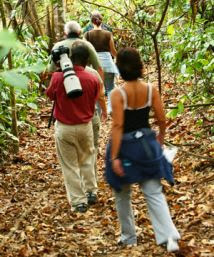Set deep in the heart of African interior,
inaccessible by road and only 128km (80miles) south of where Stanley uttered that immortal greeting ‘‘Dr Livingstone, I presume’’, is a scene reminiscent of an Indian Ocean island beach idyll.
Mahale Mountains National Park is home to some of the Africa’s last remaining wild chimpanzees; a population of roughly 800 (only 60 individual forming what is known as ‘‘M group’’) habituated to human visitors by a Japanese researchers in the 1960s.Tracking the chimps of Mahale is a magical experience.
GETTING THERE
Charter; Charter flights from Kigoma, Mwanza, Arusha or Dar es Salaam. Mostly Zantas air and Tanganyika flights have weekly scheduled flights to Mahale airstrip
Water Vessel; Twice per month Mv. Liemba ferry from Kigoma (9-10hrs) then hire or arrange with Park HQ for a boat pick up at Lagosa point (30minutes cruise to the park).
Road; Alternatively, 2 hrs car drive south of Kigoma via Simbo Village (160km ) crossing Malagarasi river to Herembe (Dry season) or 122km to Sigunga Village upon arrangement with Park HQ for boat transfer to the Park maximum 1 or 2 hrs boat cruise respectively.
By Air: several airlines offer regular services to National park airstrip (Not tarmac) but suitable for landing aircraft. Aircraft type: caravan 6-12 seeters.
Airstrip facilities: outdoor bathroom facilities
WHAT TO DO
- Chimpanzees trekking ( 3 groups of maximum 6 visitors per day)
- Forests walks and mountain hiking ( Nkungwe peak takes 7- 9 hours and is 2462m a.s.l)
- Camping safaris (wilderness & fly camping along the beaches)
- Snorkeling
- Kayaking
- Sport fishing
- Bird watching
WHEN TO VISIT
Dry season (may- October) best for forest walks although no problem in the light rains of October /November. During this period chimpanzees are likely to be seen in big groups and one may enjoy learning about their various behaviours such as hunting of other primates or mammals.Note: Chimp viewing regulations applies (Maximum three groups per day with maximum of 6 people for 1 hour each group after sighting)










No comments:
Post a Comment